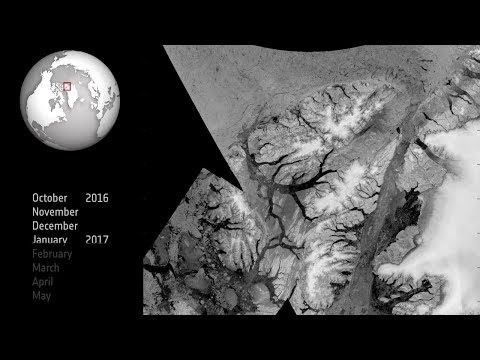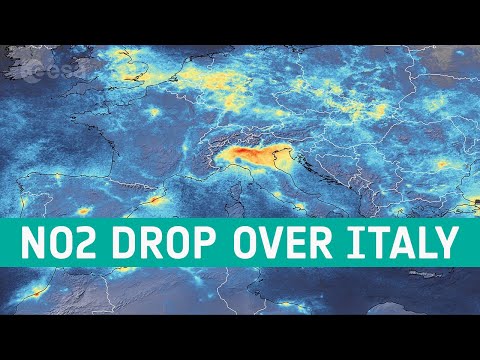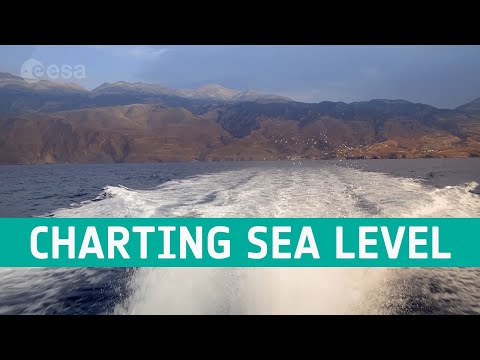What does a warming Arctic mean for the future?
The Arctic is experiencing disproportionately higher temperature increases compared to the rest of the planet, triggering a series of cascading effects. This rapid warming has profound implications for global climate patterns, human populations and wildlife.
The Copernicus Imaging Microwave Radiometer mission (CIMR) will provide measurements to decision makers with evidence of change and impact in the polar regions – with a focus on the Arctic.
The mission has the largest radiometer developed by ESA and will provide high-resolution measurements related to sea ice, the ocean, snow and ice-sheet surfaces. This will be crucial in understanding the evolution of the climate in the polar region.
CIMR is one of six Copernicus Sentinel Expansion missions that ESA is developing on behalf of the EU. The missions will expand the current capabilities of the Copernicus Space Component – the world’s biggest supplier of Earth observation data.
This video features interviews with Craig Donlon, CIMR Mission Scientist, Rolv Midthassel, CIMR Payload Manager, Claudio Galeazzi, CIMR Project Manager, Mariel Triggianese, CIMR Satellite Engineering and AIV Manager, and Marcello Sallusti, CIMR System Performance and Operations Manager.
In the meantime Craig has changed his role but will retain his position as Mission Scientist.
Credits: ESA – European Space Agency
★ Subscribe: http://bit.ly/ESAsubscribe and click twice on the bell button to receive our notifications.
Check out our full video catalog: http://bit.ly/SpaceInVideos
Follow us on Twitter: http://bit.ly/ESAonTwitter
On Facebook: http://bit.ly/ESAonFacebook
On Instagram: http://bit.ly/ESAonInstagram
On LinkedIn: https://bit.ly/ESAonLinkedIn
On Pinterest: https://bit.ly/ESAonPinterest
On Flickr: http://bit.ly/ESAonFlickr
We are Europe’s gateway to space. Our mission is to shape the development of Europe’s space capability and ensure that investment in space continues to deliver benefits to the citizens of Europe and the world. Check out https://www.esa.int/ to get up to speed on everything space related.
Copyright information about our videos is available here: https://www.esa.int/ESA_Multimedia/Terms_and_Conditions
#ESA #Satellite #EarthObservation





Merci "ESAEuropeanSpaceAgency-…"…
Milli ⚜ 🌌
If we all pay more taxes the government will change the weather for us.
So the Arctic is warming faster than anywhere else? Strange. NOAA's Arctic Report Card stated “There is currently no consensus Arctic amplification”. Looking at the European Climate Assessment & Dataset (ecad.eu) for Longyearbyen, Svalbard, the mean of daily mean temperature graph (1958-2020) shows 1958 around -4°C. The temperature then declined rapidly and stayed lower around -6° or -7°C until the mid 1980's (Remember CO2 was rising all the time). By 2015 it rose to around -2.5°C and there it levelled off for the remaining 5 years of the record. So an overall change of +1.5°C in a little over 60 years. If this is the fastest warming on Earth we have nothing to worry about. But it does show how variable climate can be, and the temperature changes have no relationship to the concentration of CO2 in the atmosphere.
In the current interglacial Svalbard has been far warmer than today. Using biomarker evidence (for example, the Early Holocene presence of sea creatures unable to survive below fixed warmth thresholds) and glacier melt extent measurements (for example, sea shells buried 6 km inside a glacier), scientists have discovered that much of Arctic Svalbard was about 7°C warmer than today during the Early Holocene, when CO2 concentrations were much lower (near 260 ppm) (Farnsworth et al, 2020. Leopold et al, 2019. van der Bilt et al, 2019. Łacka et al, 2019. Beierlein et al, 2015).
Arctic Ice, the records nearly always seem to start in 1979. Strange that, considering it was a year of record extent for Arctic Ice. Even so, data from NOAA (2022 Arctic Report Card) show winter (March) ice coverage has hardly changed since '79, and the summer (September) coverage trend had stopped declining from 2007 to the present. In September 2022, sea ice reached a minimum extent of 4.87 million square kilometers in the Arctic. This is higher than the extent in 2007, which means the Arctic summer sea ice trend is zero for the past 16 years. It was almost as high as 1995. Summer 2023 is one of the coldest in several decades, and May 2023 was the coldest on record in the Arctic. How inconvenient! Didn't someone predict in 2007 Arctic ice free by 2010, or 2015, or 2013, or in 5 years? Or was it in 2008 the Arctic ice sheet would melt away. Also predicted in 2008 North Pole ice free in … 2008 … or in 10 years. 2009 prediction: Arctic ice free in 2014. 2012 prediction: snow will be gone by 2020. And 2013 star prediction: Methane catastrophe in 2 years because of ice free Arctic. 2018 prediction: zero chance of permanent ice in Arctic by 2022. Now they're saying ice gone by 2030 or 2050. That's better because the person making that prediction will have moved on, been promoted or retired so there will be no come back when it doesn't happen. The Arctic Ice is still there, and it's stopped shrinking.
Anyway the Arctic has already been ice free in the current interglacial. It was certainly warm enough during the Holocene Climatic Optimum, being upto 7°C warmer on the shores of the Arctic during that time, with trees growing on the shores of the ocean, far to the north of the current treeline.
The northern coast of Greenland was, during parts of the Pleistocene, warmer by double figures when compared to today. The summer and winter average minimum temperatures of 10 degrees Celsius and 17 degrees C, respectively, were more than 10 degrees C warmer than present day. I think it was a maximum of 19 °C warmer than today. So no ice in the ocean, and the world survived. These changes emerged in the Earth's climate system without any human input.
A corrida ao Ártico … pelas suas riquezas é tanta depois da II Guerra mundial e tão intensa que os corredores querem que derreta depressa para que a extracção dos recursos seja mais rapidíssima!! É mais um sitio vandalizado!! De que adianta esta ganância se depois não a podem alimentar?! Era uma vez um Pólo Ártico, uma raça humana e uma Terra que terá sido?!?
I'd be grateful if corporations could pay an Environmental clean up tax because they are frequently financing businesses that are directly responsible for pollution such as microplastics PFAs or water waste, or the corporations directly. And the tax should high enough to not count as a business expense.
I love how they speak English 😀
Wann wird der Menschheit offenbart, dass es aliens gibt und die unter uns leben?
Happy to be part of the Industry team!
What sort of actuators are used to keep the mesh antenna in the correct shape?
Thank you.
🎩🎩
I had to look twice at the thumbnail thinking what a weird solarpanel or heat shield😂
Now that we know the problem and the solution, all this data collection is only adding to the problem which is not being solved. Spending energy and resources for this doesn't help.
it means another ice age is coming